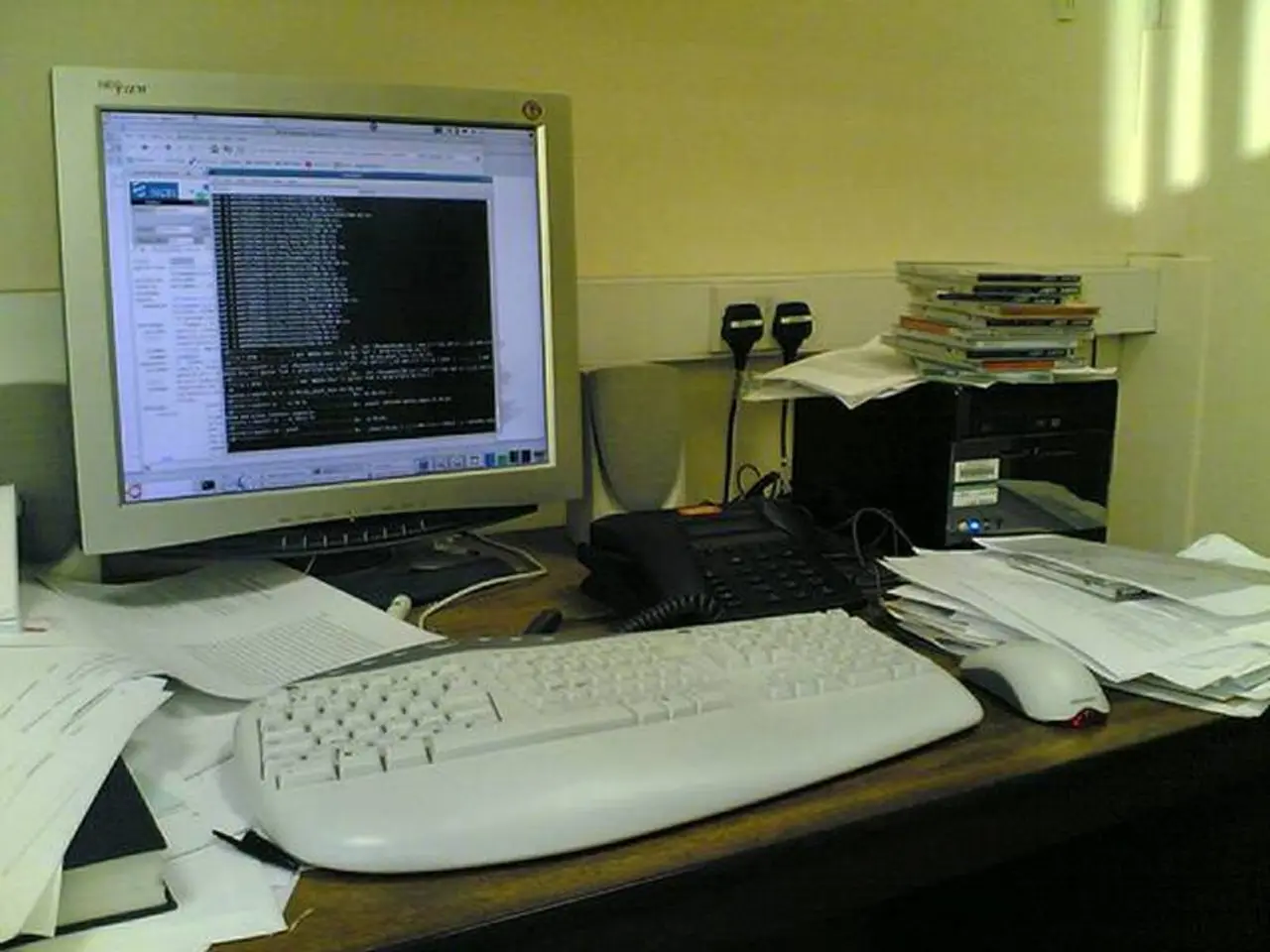Production Crew behind the Scenes Find the Perfect Blend with Switchers
In the world of broadcasting, innovation is taking centre stage, as new technologies are being applied to production switchers. These advancements, including cutting-edge software and reliable hardware, are not only reducing costs but also achieving results that may even surpass previous standards.
Scott McQuaid, product manager for switchers at Sony Electronics Professional Solutions Americas, has highlighted a significant development. He explains that one IP connection at 100G can handle up to 32 inputs and 32 outputs, allowing smaller panel/switcher hardware to deal with 64 inputs and 64 outputs in IP. This shift towards more efficient processing is opening up new possibilities for the industry.
One of the most intriguing developments is the concept of "virtual switchers". Nigel Spratling, vice president of switchers and servers at Ross Video, introduced this idea, explaining that these are software-based switchers that can live in the cloud and be accessed from anywhere. This mobility and flexibility are transforming the way broadcasting is approached.
Grass Valley demonstrated a fascinating application of these virtual switchers at IBC 2024, showcasing switching control in conjunction with the Apple Vision Pro mixed-reality headset. This fusion of technology is a testament to the direction the industry is heading.
As the younger generation of operators and technical directors enter the broadcasting industry, they bring with them a familiarity with touch panels, iPads, and iPhones, but less so with big traditional switcher panels. Recognising this shift, switcher manufacturers are now offering various operating modes to enable remote control and operation. For instance, Nigel Spratling notes that control panels can be located remotely and connected via VPN technology.
FOR-A's Satoshi Kanemura notes that the budget and staff cuts being made by some of the large U.S. broadcasters have led to the production of smaller-scale switchers featuring only 2 M/E and 40 inputs. This trend towards more affordable, yet capable, switchers is making high-quality broadcasting more accessible to a wider range of customers.
Keith Vidger, principal technical consultant for media and entertainment at Panasonic Connect, observes that more content is being created by people who use fewer traditional outlets to distribute at higher production values with a lower cost. This is a testament to the transformative power of these new technologies.
The trend is that the production-switcher surface stays the same but has more of a web GUI (graphical user interface) setup and control. This shift towards a more digital interface is making the switchers more user-friendly and accessible to a wider range of operators.
Production switchers play a crucial role in setting the visual style for a TV station, and broadcasters want something that looks the same regardless of the number of cameras and has an impact. Broadcasters are open to anything that achieves their goal, whether it's a software-based switcher or a traditional engine, as long as it's reliable and suitable for major events.
Some end-user testing is taking place in the realm of virtual monitoring combined with a physical panel, such as Grass Valley's Maverik MAV GUI modules. This hybrid approach is a promising development, offering the best of both worlds - the familiarity of a physical panel with the efficiency and flexibility of a virtual switcher.
Greg Huttie, vice president of production switchers at Grass Valley, observes that broadcasters are interested in developing the look and feel of their output, and the 'wow factor' is an important element in how manufacturers and their R&D departments develop switchers. This focus on aesthetics and innovation is ensuring that the switchers of tomorrow will be as impressive as they are functional.
In conclusion, the world of production switchers is undergoing a significant transformation, driven by advancements in technology and a changing landscape in the broadcasting industry. The future is exciting, with the promise of more efficient, flexible, and user-friendly switchers that will revolutionise the way we produce and consume broadcast content.
Read also:
- Impact of Alcohol on the Human Body: Nine Aspects of Health Alteration Due to Alcohol Consumption
- Understanding the Concept of Obesity
- Microbiome's Impact on Emotional States, Judgement, and Mental Health Conditions
- Criticisms levelled by a patient advocate towards MPK's judgement on PCR testing procedures








